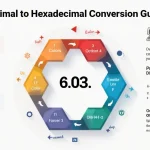Percentage Decrease Calculator
Is this tool helpful?
How to Use the Percentage Decrease Calculator Effectively
The Percentage Decrease Calculator is a user-friendly tool designed to help you quickly determine the percentage decrease between two values. Here’s a step-by-step guide on how to use this calculator effectively:
Step 1: Enter the Original Value
In the “Original Value” field, input the initial amount before the decrease. This could be any numerical value, such as:
- A starting price: $100
- An initial weight: 80 kg
- A beginning population: 1,000,000
Step 2: Input the New Value
In the “New Value” field, enter the amount after the decrease. This should be a number lower than the original value. For example:
- A reduced price: $75
- A decreased weight: 72 kg
- A smaller population: 950,000
Step 3: Specify Decimal Places (Optional)
If you want to control the precision of your result, you can enter the desired number of decimal places in the “Decimal Places” field. This is optional, and if left blank, the calculator will default to two decimal places. You can enter any whole number between 0 and 10.
Step 4: Calculate the Result
Click the “Calculate” button to process your inputs. The calculator will then display the following information:
- Percentage Decrease: The percentage by which the original value has decreased
- Amount of Decrease: The numerical difference between the original and new values
- Interpretation: A brief explanation of the result
Understanding Percentage Decrease: Definition, Purpose, and Benefits
Percentage decrease is a mathematical concept used to express the relative reduction in a value over time or between two points of comparison. It’s a crucial metric in various fields, including finance, economics, science, and everyday life situations.
Definition of Percentage Decrease
Percentage decrease represents the proportion by which a value has reduced, expressed as a percentage of the original amount. It’s calculated using the following formula:
$$\text{Percentage Decrease} = \frac{\text{Original Value} – \text{New Value}}{\text{Original Value}} \times 100\%$$Purpose of Calculating Percentage Decrease
The primary purposes of calculating percentage decrease include:
- Quantifying relative changes in values over time
- Comparing reductions across different scales or units
- Analyzing trends and patterns in data
- Making informed decisions based on proportional changes
Benefits of Using a Percentage Decrease Calculator
While it’s possible to calculate percentage decrease manually, using a dedicated calculator offers several advantages:
- Accuracy: Eliminates human error in calculations, especially with complex numbers
- Speed: Provides instant results, saving time on manual computations
- Consistency: Ensures uniform calculations across multiple data points
- Accessibility: Allows for quick calculations without the need for advanced mathematical knowledge
- Versatility: Handles a wide range of values and scenarios
- Interpretation: Offers clear explanations of results, aiding in understanding
How the Percentage Decrease Calculator Addresses User Needs
This calculator is designed to solve specific problems and meet various user needs across different domains. Let’s explore how it addresses these needs with practical examples:
1. Financial Analysis
For investors and financial analysts, tracking percentage decreases is crucial for understanding market trends and investment performance.
Example Calculation:
An investor wants to calculate the percentage decrease in a stock’s value:
- Original stock price: $85.50
- New stock price: $72.30
Using the calculator:
- Percentage Decrease: 15.44%
- Amount of Decrease: $13.20
This information helps the investor assess the stock’s performance and make informed decisions about their portfolio.
2. Sales and Marketing
Sales professionals use percentage decrease calculations to analyze sales performance and set realistic goals.
Example Calculation:
A retail store manager wants to evaluate the impact of a slow month:
- Previous month’s sales: $45,000
- Current month’s sales: $38,500
Using the calculator:
- Percentage Decrease: 14.44%
- Amount of Decrease: $6,500
This data helps the manager understand the sales decline and develop strategies to improve performance.
3. Health and Fitness
Individuals tracking their health metrics often need to calculate percentage decreases in weight, body measurements, or other health indicators.
Example Calculation:
A person following a fitness program wants to track their weight loss progress:
- Starting weight: 82.5 kg
- Current weight: 76.8 kg
Using the calculator:
- Percentage Decrease: 6.91%
- Amount of Decrease: 5.7 kg
This calculation provides motivation and helps in setting future weight loss goals.
4. Environmental Studies
Scientists and researchers often need to calculate percentage decreases in environmental factors such as pollution levels or species populations.
Example Calculation:
An environmental scientist is studying the decline in a local bird population:
- Population 5 years ago: 12,500
- Current population: 10,800
Using the calculator:
- Percentage Decrease: 13.60%
- Amount of Decrease: 1,700
This data helps in assessing the impact of environmental changes and developing conservation strategies.
Practical Applications of the Percentage Decrease Calculator
The versatility of this calculator makes it valuable across various fields and everyday situations. Here are some practical applications:
1. Business and Economics
- Budget Analysis: Calculate the percentage decrease in departmental budgets to assess cost-cutting measures.
- Market Share Evaluation: Determine the percentage decrease in market share to analyze competitive pressures.
- Profit Margin Analysis: Calculate the percentage decrease in profit margins to identify areas for improvement.
2. Personal Finance
- Expense Tracking: Calculate the percentage decrease in monthly expenses to evaluate budgeting efforts.
- Savings Goals: Determine the percentage decrease needed in spending to meet savings targets.
- Debt Reduction: Track the percentage decrease in outstanding debt to monitor progress towards financial freedom.
3. Education and Academia
- Grade Improvement: Calculate the percentage decrease in error rates to measure academic progress.
- Enrollment Trends: Analyze the percentage decrease in student enrollment to inform administrative decisions.
- Research Data Analysis: Evaluate percentage decreases in experimental results to draw scientific conclusions.
4. Health and Wellness
- Cholesterol Management: Track the percentage decrease in cholesterol levels to assess the effectiveness of lifestyle changes or medication.
- Blood Pressure Monitoring: Calculate the percentage decrease in blood pressure readings to evaluate treatment efficacy.
- Fitness Milestones: Measure the percentage decrease in workout times to track athletic performance improvements.
5. Environmental Conservation
- Carbon Footprint Reduction: Calculate the percentage decrease in carbon emissions to measure the impact of green initiatives.
- Water Conservation: Determine the percentage decrease in water usage to assess the effectiveness of conservation efforts.
- Waste Reduction: Track the percentage decrease in waste production to evaluate sustainability programs.
Frequently Asked Questions (FAQ)
Q1: What is the difference between percentage decrease and percentage change?
A1: Percentage decrease specifically measures the reduction in a value and is always expressed as a positive number. Percentage change, on the other hand, can represent both increases and decreases, with decreases shown as negative percentages.
Q2: Can I use this calculator to find percentage increase?
A2: While this calculator is designed for percentage decrease, it can indirectly show percentage increase. If the new value is higher than the original value, the result will be a negative percentage decrease, which is equivalent to a positive percentage increase.
Q3: How do I interpret a result showing 0% decrease?
A3: A 0% decrease means there has been no change between the original and new values. This occurs when both input values are identical.
Q4: What should I do if I get an error message?
A4: Common error messages include:
- “Original value cannot be zero”: Ensure your original value is not 0, as this would result in division by zero.
- “Please enter valid numbers”: Check that both inputs are numerical values without any text or special characters.
Q5: How many decimal places should I use in my result?
A5: The number of decimal places depends on your specific needs and the context of your calculation. For most general purposes, 2 decimal places are sufficient. For more precise calculations, you might use up to 4 or 5 decimal places.
Q6: Can this calculator handle large numbers?
A6: Yes, this calculator can handle a wide range of numbers, from very small decimals to very large integers. However, for extremely large numbers, consider using scientific notation to input the values.
Q7: Is it possible to calculate the percentage decrease between negative numbers?
A7: Yes, you can calculate the percentage decrease between negative numbers. The calculator will treat the numbers as absolute values and provide the correct percentage decrease.
Q8: How do I calculate the new value if I know the original value and the percentage decrease?
A8: While this calculator doesn’t directly solve for the new value, you can use the following formula:
$$\text{New Value} = \text{Original Value} \times (1 – \frac{\text{Percentage Decrease}}{100})$$Q9: Can I use this calculator for currency conversions?
A9: This calculator is not designed for currency conversions. However, you can use it to calculate the percentage difference between two currency amounts after conversion.
Q10: How does this calculator handle rounding?
A10: The calculator rounds the result to the specified number of decimal places using standard rounding rules. If no decimal places are specified, it defaults to two decimal places.
By addressing these common questions, users can better understand and utilize the Percentage Decrease Calculator for a wide range of applications, from financial analysis to personal goal tracking. The tool’s versatility and ease of use make it an invaluable resource for anyone needing to quickly and accurately calculate percentage decreases in various contexts.
Important Disclaimer
The calculations, results, and content provided by our tools are not guaranteed to be accurate, complete, or reliable. Users are responsible for verifying and interpreting the results. Our content and tools may contain errors, biases, or inconsistencies. We reserve the right to save inputs and outputs from our tools for the purposes of error debugging, bias identification, and performance improvement. External companies providing AI models used in our tools may also save and process data in accordance with their own policies. By using our tools, you consent to this data collection and processing. We reserve the right to limit the usage of our tools based on current usability factors. By using our tools, you acknowledge that you have read, understood, and agreed to this disclaimer. You accept the inherent risks and limitations associated with the use of our tools and services.







